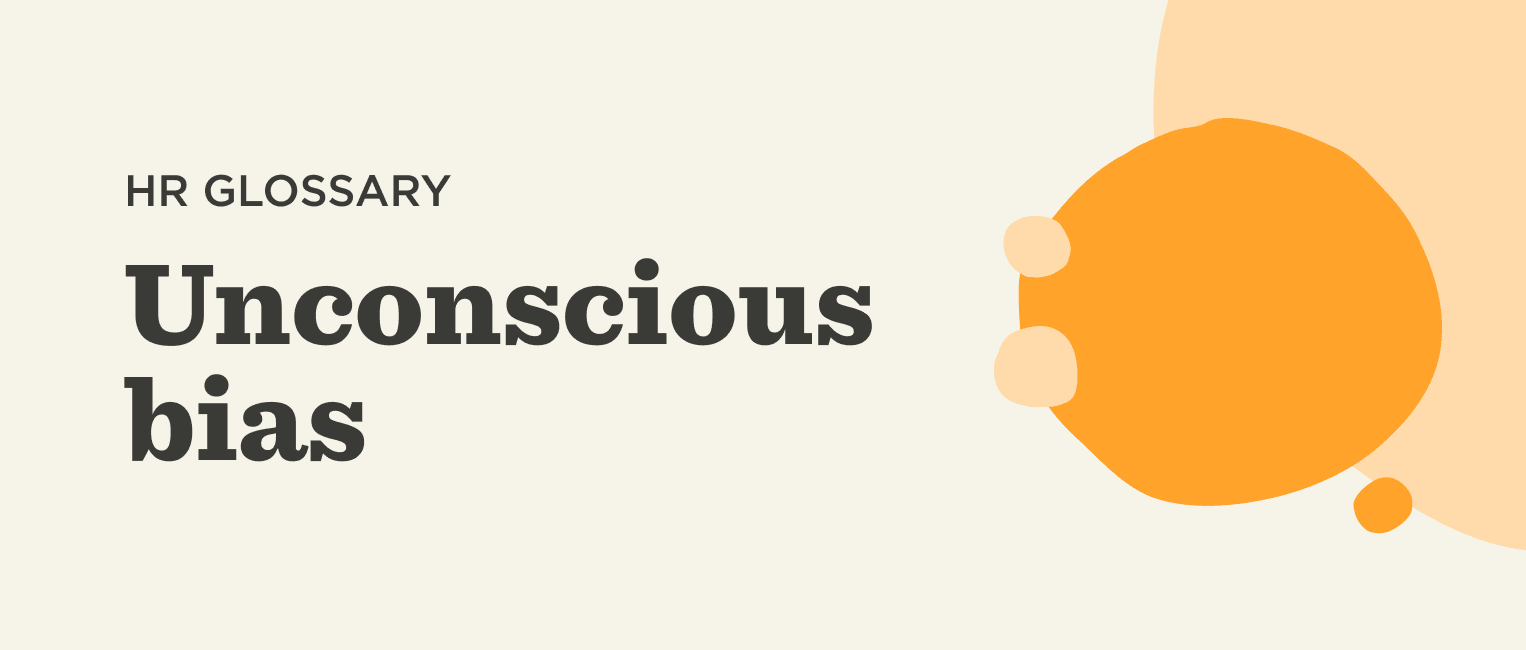What is unconscious bias in the workplace?
Unconscious bias in the workplace refers to the human tendency to form opinions about others in the office without having enough relevant information. Bias can stem from stereotypes, preconceived notions, past experiences, or gut instinct.
Unconscious bias occurs when an individual is unaware of a prejudice. For instance, a manager may tend to favor people with a similar educational background—without realizing it.
Why should HR leaders care about unconscious bias in the workplace?
Through aspiring to turn unconscious bias into conscious bias, people can build an awareness of their thinking patterns and how they form opinions. In turn, this practice can help them make more impartial decisions. Moreover, raising people’s awareness concerning bias can ultimately contribute to a more accepting and inclusive company culture.
What can HR leaders do to address unconscious bias in the workplace?
While HR leaders cannot eliminate unconscious bias with the flip of a switch, they can boost awareness of unconscious bias within HR processes, employee relations, and the work culture. Here are several ways to spearhead this initiative:
- Lead by example and look inwards. HR leaders can impact their work community by modeling the behavior they want to see in the workplace. Treating others fairly and judging people and coworkers based on their character and abilities, not on their external appearance or physical traits, can set the scene for minimal bias.
- Incorporate practical training. Bias is part of human nature. Yet, HR leaders can plan a training program that encourages individuals to examine their natural inclinations and determine whether their notions stem from solid reasoning or perceived stereotypes. The training can guide people in practicing active listening, mindfulness, and treating each coworker as a unique individual.
- Redesign HR processes. To reduce bias and promote equal opportunity, interviewers can ask a series of universal questions to candidates applying for the same position. Another option is to integrate a psychometric work test before the interview, allowing hiring managers to assess candidates solely upon their intellectual abilities. Each company should determine which changes are appropriate for its HR processes and business strategy.
- Align bias training with the company code of conduct. Ensuring alignment between the company code of conduct and the bias training can assist HR leaders in creating a goal-oriented plan that upholds consistency, transparency, and integrity. Examining unconscious bias is helpful when it helps leaders and employees become kinder and more empathetic to their coworkers. However, if HR leaders overly enforce bias policies beyond the letter of the law, their efforts could backfire and potentially damage employee autonomy.
Recommended For Further Reading
Why should addressing unconscious bias in the workplace be part of modern HR strategy?
An HR strategy that encourages acceptance, empathy, and reduced bias can promote a positive employee experience and contribute to retention, engagement, and productivity. By integrating a plan for reducing unconscious bias into the HR strategy, HR leaders can nurture a more inclusive company culture and help everyone feel valued.

